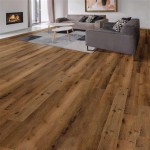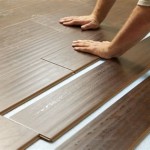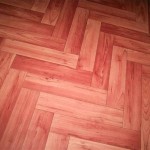Linoleum and Vinyl Flooring: A Comprehensive Guide
Linoleum and vinyl flooring represent two popular resilient flooring options frequently chosen for residential and commercial applications. While both offer water resistance and relative ease of maintenance, they possess distinct compositions, manufacturing processes, and performance characteristics. Understanding these differences is crucial for selecting the most appropriate flooring material for a specific project.
Composition and Manufacturing
Linoleum is considered a natural and sustainable flooring option. Its primary components include linseed oil (derived from flax seeds), rosin (a resin extracted from pine trees), wood flour, cork dust, limestone, and pigments. These ingredients are mixed together and calendered onto a backing material, typically burlap or jute. The resulting sheet is then cured in a heated chamber, allowing the linseed oil to oxidize and harden, forming a durable and resilient surface. The manufacturing process has remained largely unchanged for over a century, reflecting the material's inherent simplicity and reliance on renewable resources.
Vinyl flooring, on the other hand, is a synthetic material made primarily from polyvinyl chloride (PVC) resin. Other additives, such as plasticizers, stabilizers, and pigments, are incorporated to enhance flexibility, durability, and aesthetic appeal. There are two main types of vinyl flooring: sheet vinyl and vinyl tile (including luxury vinyl tile or LVT and luxury vinyl plank or LVP). Sheet vinyl is manufactured in large rolls and typically installed over a subfloor with adhesive. Vinyl tile and plank are produced in individual pieces, offering greater design flexibility and ease of installation.
The manufacturing process for vinyl flooring involves combining PVC resin with the aforementioned additives. This mixture is then heated and extruded or calendered to form sheets of varying thicknesses. For printed vinyl flooring, a decorative layer is applied to the surface using rotogravure or digital printing techniques. A protective wear layer is then applied to enhance scratch and stain resistance. The composition and manufacturing processes of vinyl flooring allow for a wide range of appearances, mimicking natural materials like wood, stone, and tile.
Performance Characteristics and Applications
Linoleum is known for its durability and resistance to wear and tear. The color runs throughout the entire thickness of the material, meaning that scratches and scuffs are less noticeable than on surface-printed vinyl flooring. Linoleum also possesses inherent antimicrobial properties due to the oxidation process of linseed oil, which inhibits the growth of bacteria and fungi. This makes it a suitable choice for healthcare facilities, schools, and other settings where hygiene is paramount. However, linoleum can be more susceptible to staining from certain substances, particularly those with a high alkaline content. Proper maintenance and the application of a sealant can help mitigate this issue.
Vinyl flooring offers excellent water resistance, making it ideal for bathrooms, kitchens, and laundry rooms. It is also relatively easy to clean and maintain, requiring only regular sweeping and mopping. The wear layer on vinyl flooring provides protection against scratches, scuffs, and stains, although the level of protection varies depending on the thickness and quality of the wear layer. Luxury vinyl tile and plank, in particular, often feature thicker wear layers and enhanced embossing, providing a more realistic and durable alternative to natural materials. Vinyl flooring is generally more affordable than linoleum and offers a wider range of design options.
The application of each flooring type often depends on the specific demands of the environment. Linoleum finds favor in areas where sustainability and inherent antimicrobial properties are valued, such as hospitals and eco-conscious homes. Its durability also makes it suitable for high-traffic areas. Vinyl, with its superior water resistance and affordability, is frequently implemented in bathrooms, kitchens, and basements. The wide array of styles also makes it a popular choice for those seeking the aesthetic of natural materials without the associated cost and maintenance.
Installation and Maintenance Procedures
Linoleum flooring requires professional installation due to its rigidity and the need for precise cutting and seaming. The subfloor must be perfectly smooth and level to prevent imperfections from telegraphing through the linoleum. Seams are typically heat-welded to create a seamless and watertight surface. After installation, linoleum should be sealed with a suitable finish to protect it from staining and wear. Ongoing maintenance involves regular sweeping and mopping with a pH-neutral cleaner. Avoid using harsh chemicals or abrasive cleaners, as they can damage the surface.
Vinyl flooring offers more flexible installation options, ranging from glue-down to click-lock systems. Sheet vinyl typically requires professional installation, while vinyl tile and plank can be installed by experienced DIYers. The subfloor preparation is crucial for a successful installation, ensuring it is clean, dry, and level. Click-lock vinyl flooring systems are relatively easy to install, as the planks or tiles simply snap together. Glue-down vinyl flooring requires the application of an adhesive to the subfloor. Maintenance for vinyl flooring is straightforward, involving regular sweeping and mopping with a mild detergent. Avoid using solvent-based cleaners or abrasive scrub brushes, as they can dull the finish.
Proper subfloor preparation is paramount for both linoleum and vinyl flooring installations. Any existing flooring, such as carpet or old tile, must be removed. The subfloor should be thoroughly cleaned to remove any debris, dust, or grease. Imperfections, such as cracks or unevenness, should be repaired with a suitable patching compound. A self-leveling underlayment may be necessary to create a perfectly smooth and level surface. Taking the time to properly prepare the subfloor will ensure a long-lasting and visually appealing flooring installation.
Cost Considerations and Environmental Impact
The cost of linoleum flooring is generally higher than that of standard vinyl flooring, reflecting its natural composition and more complex manufacturing process. However, the long-term durability and potential health benefits of linoleum may offset the higher initial cost. The cost of vinyl flooring varies depending on the type (sheet vinyl, vinyl tile, or luxury vinyl), the thickness of the wear layer, and the design complexity. Luxury vinyl tile and plank typically cost more than standard vinyl sheet or tile.
From an environmental perspective, linoleum is considered a more sustainable choice due to its use of renewable resources and its biodegradable properties. However, the manufacturing process of linoleum does require energy and produces some waste. Vinyl flooring, being a synthetic material derived from petroleum, has a greater environmental impact. The production of PVC resin is energy-intensive and can release harmful emissions. However, advancements in manufacturing technology have reduced the environmental footprint of vinyl flooring. Some manufacturers now offer recycled content vinyl flooring, which helps to reduce the demand for virgin PVC resin.
An analysis of the environmental impact should also consider the lifespan of the flooring. Linoleum, with proper maintenance, can last for several decades, reducing the need for frequent replacements. Vinyl flooring, while durable, may require replacement more often, especially in high-traffic areas. The disposal of both linoleum and vinyl flooring can also have environmental implications. While linoleum is biodegradable, it may take a long time to decompose in a landfill. Vinyl flooring is not biodegradable and can contribute to plastic waste. Some recycling programs are available for vinyl flooring, but they are not yet widely implemented.
Design Options and Aesthetics
Linoleum offers a distinctive aesthetic characterized by its natural texture and subtle variations in color. It is available in a range of solid colors, marbled patterns, and geometric designs. The color runs throughout the entire thickness of the material, creating a visually seamless and durable surface. While linoleum may not offer the same level of realism as some vinyl flooring products, it provides a timeless and sophisticated look.
Vinyl flooring excels in its ability to mimic the appearance of natural materials, such as wood, stone, and ceramic tile. Advanced printing and embossing techniques create highly realistic textures and patterns. Luxury vinyl tile and plank, in particular, offer a wide range of design options, including various wood species, stone types, and tile sizes. Vinyl flooring also allows for greater customization, with the ability to incorporate custom designs and logos.
The choice between linoleum and vinyl flooring ultimately depends on the desired aesthetic and the overall design scheme of the space. Linoleum is a good choice for those seeking a natural and sustainable flooring option with a classic and understated look. Vinyl flooring is well-suited for those who want the look of natural materials at a more affordable price point, with greater design flexibility and customization options.

Vinyls Vs Linoleum Flooring Major Differences Pros Cons And Costs Forbes Home

What S The Difference Between Vinyl Linoleum Flooring Floor Coverings International

What S The Difference Linoleum Vs Vinyl Fine Homebuilding

Linoleum Vs Vinyl The Environmentally Friendly Flooring Battle Pro

Linoleum Vs Vinyl Flooring Which Is Better

What Is The Difference Between Vinyl And Linoleum Flooring Yorkshore S Marketing

Types Of Vinyl Flooring The Home Depot

Linoleum Vs Vinyl Laminate Pros And Cons Of Each Flooring
Diffe Types Of Vinyl Flooring Tarkett Commercial

Linoleum Flooring Pros And Cons Forbes Home
Related Posts








